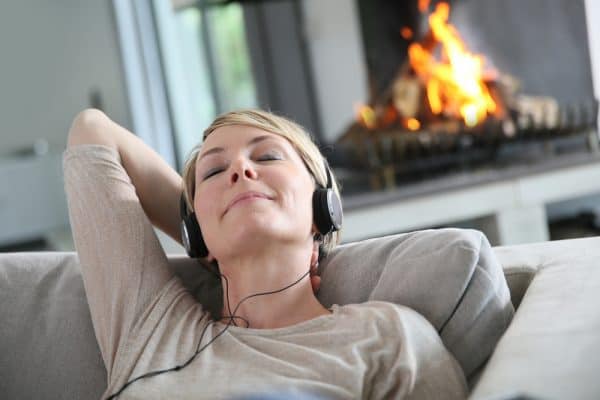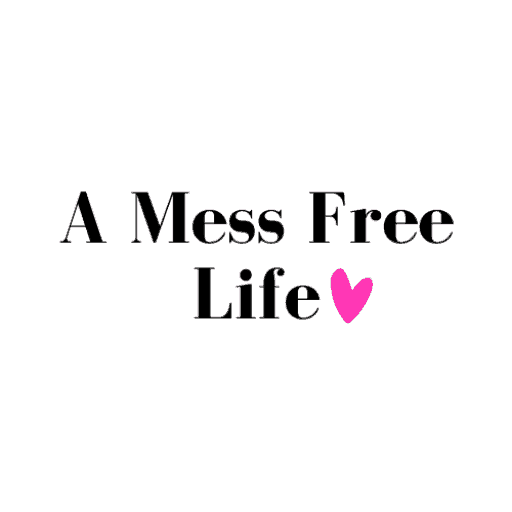A Mess Free Life may collect a share of sales or other compensation from the links on this page.
Podcasting has become more and more popular and it’s a great way to build your audience, but how do you start a podcast? And, if you’re a blogger should you start a podcast too?
If you don’t know that much about it, it may seem complicated and something you don’t really want to try. Too much time to learn and keep up with; you’ve got enough going on. I get it! But if that extra time and effort leads to loads of new followers, wouldn’t it be worth it?
Table of Contents
SHOULD YOU START A PODCAST AS A BLOGGER?
Yes, when you start a podcast there is a learning curve. You do need to learn new things and it will take some practice to get better at it. But it won’t take long before you’re a natural.
The one thing that’s most important though is to commit. Building your following won’t happen overnight and once your followers find you, they’ll start to look forward to hearing more from you. Just as you’ve committed to your blog, you need to commit to working on and continuing your podcast.
When you’re ready to start a podcast, you need to understand that it’s not just recording an audio and posting it. While you’re learning and getting better at it, there’s a lot of time involved in learning how to edit, finding the right tools, and building your audience. But, if you stick with it, the work will pay off.
If you’re ready to start a podcast and commit to it, here’s what you need to know.
TRAINING
Just like anything new, getting some training under your belt might be a good idea before you hit record and start talking.
As podcasting has evolved, the expectations of the listener have gotten higher. The last thing you want to do is to start a podcast and fail right from the starting gate. That would suck big time.
So I offer these two very
My friend Kim Anderson recently created a course on podcasting called Just Start Podcasting.
In this course, Kim eliminates the learning curve and gets you ready to launch a podcast with planning, strategy, and step by step implementation!
The only thing standing in your way right now is learning how. And you can learn the how-to and get it out in the world in as little as two weeks with this course.
This is a great first introductory course if you want to dip your toe in the water and see if podcasting is right for you. It may sound easy but there is more to it than just plugging in your microphone and hitting the record button.
Once you determine that you’re in it for the long haul, Pat Flynn has a course called Power Up Podcasting at a more significant price point but is probably worth it if you really want to be a power player in the podcasting space. I have not taken this course myself, but Pat is an online guru and I can’t imagine he would produce anything but stellar content.
Additionally, he has some great articles on podcasting you can find here.
THE TOOLS
Microphone
Any microphone will do, but listeners can tell the difference between a cheap microphone and a high quality one. You don’t need to spend a fortune though, many good quality mics are about $100. Make sure there’s a way to hook it up to your computer (i.e. USB plug) or you’ll need a separate recorder.
You can also use a voice recorder with a built in mic and digital recording as long as it can connect to your computer so you can download what you record.
Software
You’ll also need some editing software. Some more professional versions can cost up to $900, but there are some free and inexpensive downloads you can find that work just fine. The main purpose of this software is to edit out any additional filler at the start or end of your recording and maybe clip some content in the middle that you don’t want. Most software will also allow you to enhance the quality of the recording and reduce background noises.
HOW TO START A PODCAST
-
Plan
You need to have a plan for your podcast. What’s the purpose? Who will you attract? What will you talk about? It’s important to know who your niche audience will be and what they’re interested in hearing about.
-
Listeners Need a Reason
Your listeners need to understand what you’re talking about and why they would be interested. What is their reason for following you? This needs to be clear in your podcast description and for your own purposes in creating content.
-
Name It
Your podcast name will help draw in your audience. There are a few ways to go here:
- Use your blog name – this will develop a clear connection to your blog.
- Use your name – this is only a good option if you’re an expert in your field and people already know who you are.
- Use a descriptive name – this helps to make you more searchable, but many people think this is a boring option.
- Use a clever name – this may help to draw more followers out of curiosity. However, it still needs to be searchable so include at least one descriptive word in your clever title.
-
Plan Your Episodes
How long will your podcast be? Will you interview people or just talk? Will you answer questions that have been sent in or will you have content prepared? How often will you release a new podcast episode?
The sweet spot for podcast length is between 20 and 45 minutes. Unless you’re providing extremely valuable content, most listeners aren’t interested in anything much longer than that. Most will listen on their daily commute so anything much longer will mean they’re either not listening to the entire podcast or they’ll have to come back to it later.
As for how often, keep in mind that you’re not the only podcast your listeners are following. If you post too often, they’ll miss some content because they want to listen to other podcasts. But post too infrequently and they’ll forget about you.
Posting about once a week seems to be the best schedule for building and keeping an audience. And just like your blog posts, your podcast should have a schedule. Always post on the same day and around the same time every week so your followers can create a habit of listening.
-
Episode Titles
Just like choosing an SEO friendly title for your blog post, you need to do the same for your podcast episodes. If you just title your episodes “Episode 1” and “Episode 2,” no one will ever find you. Use what you’ve learned about blogging and carry it over to podcasting. “Five Tips For . . .” or “The Best Way To . . .” or “Everything You Want to Know About . . .” all make great titles that will get your listeners interested.
-
Choose a Format
Your format will also keep your listeners interested so your best option is to use the same format for all of your episodes. If you want to change it up, do so very infrequently or do it for all episodes moving forward. Listeners like structure so keep that in mind when you start a podcast.
Monologue – this is just you providing information or answering questions, you don’t need to depend on anyone else.
Co-Host – working with a regular co-host to have a discussion back and forth. This format calls for the co-host to always be the same person, with maybe the occasional guest host.
Interview – this is you interviewing a new guest with each episode. This is a nice combination of the monologue and co-host. The show is still exclusively yours with a new guest each time to offer new and fresh content.
CONCLUSION
Just like starting your blog, when you’re ready to start a podcast there are several things you need to think about and plan for. You’ll need to determine your best options for hosting, create an editorial calendar, and commit to bringing quality content on a regular basis.
But the increased audience it could possibly bring to your blog makes the work worth it.



